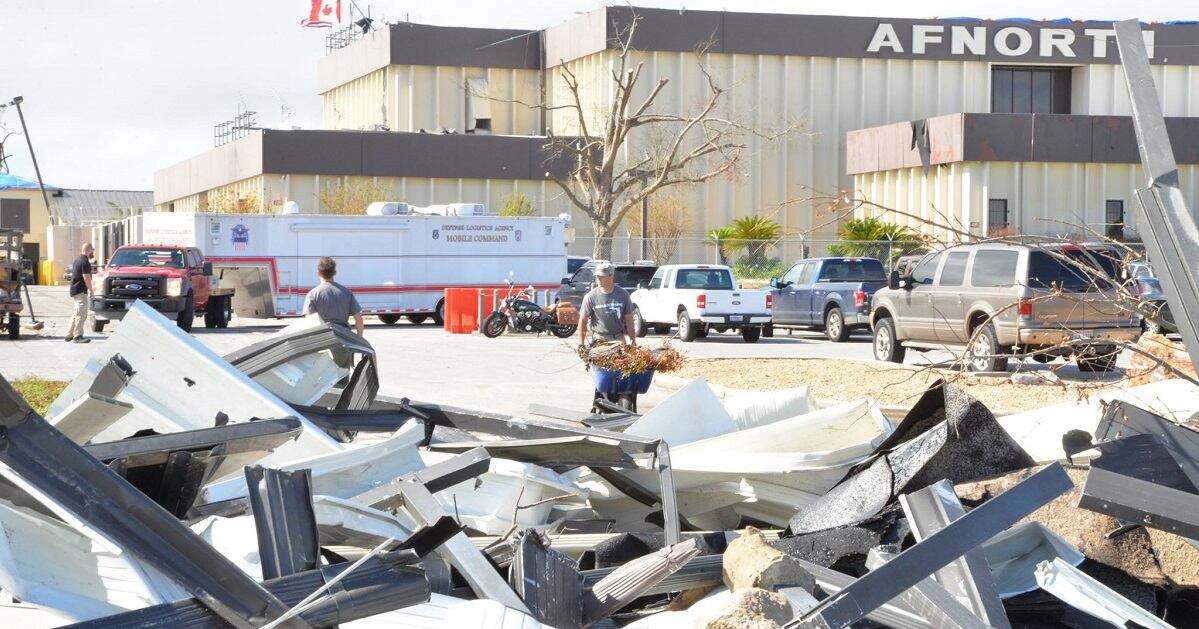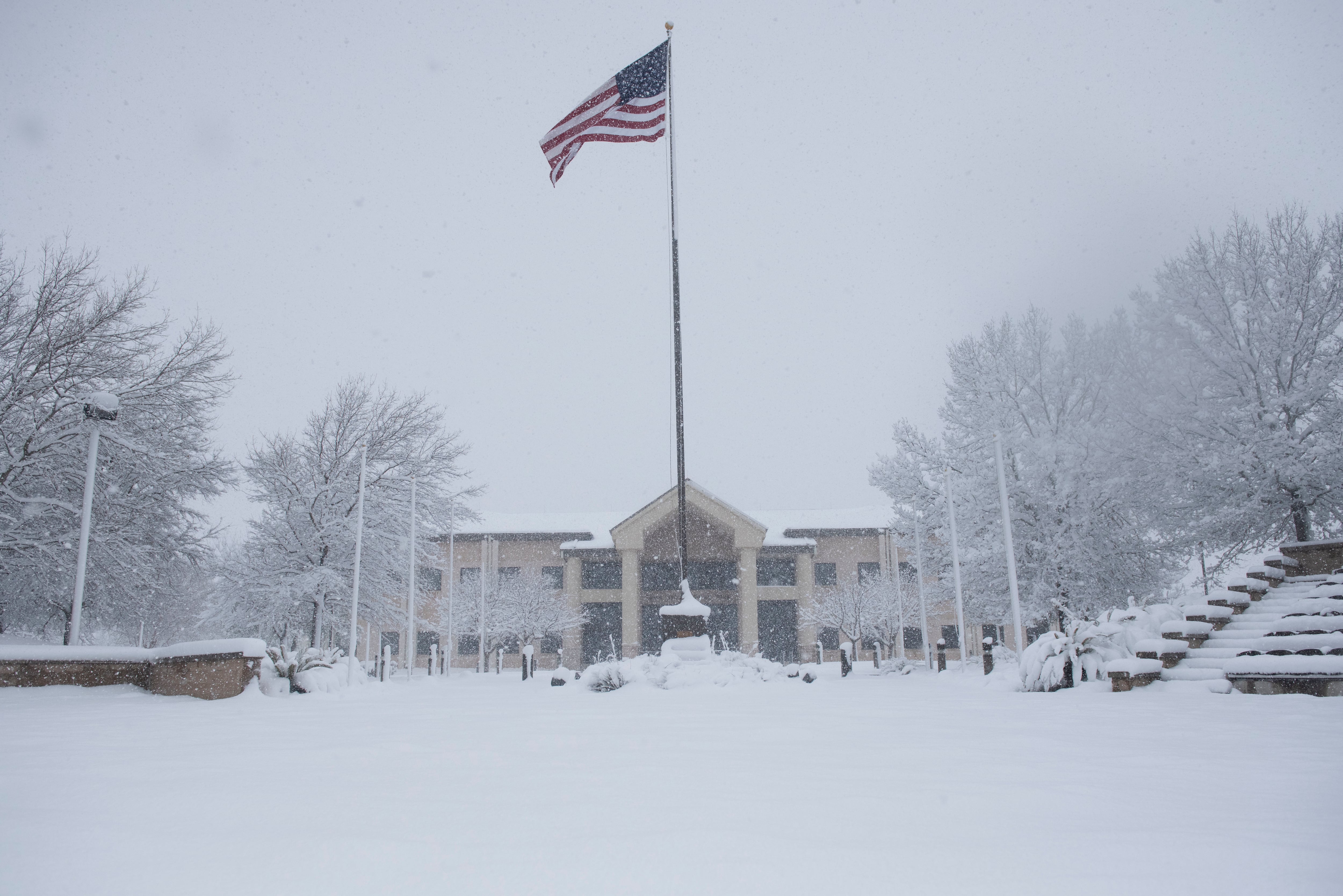One month after Texas’s power grid failed in the face of Winter Storm Uri, which unleashed deadly cold, ice and snow across several states, the U.S. military is still trying to address its effects and plan for the next natural disaster.
Uri hit the Army hard, damaging nearly 700 facilities and more than 1,300 privatized military homes at four installations in Texas, Oklahoma, Kansas and Louisiana. The service has since repaired all critical infrastructure and completed more than half of all needed fixes caused by the storm, an Army official told House lawmakers Friday.
Lt. Gen. Douglas Gabram, commanding general of Army Installation Management Command, told the House Armed Services readiness subcommittee that planning ahead of time, shutting down non-winterized water systems in advance, dispatching a surge of maintenance teams, and other measures are at the heart of the service’s rapid response.
Still, he acknowledged, “aging and poor facilities and systems failed first and most often.” Heating and cooling systems in barracks are outdated, making it difficult to find parts to replace those that are broken. Many facilities are dealing with “significant water damage” after pipes burst in the freezing weather as well.
RELATED

Storms are costly even without major destruction. As the price of electricity skyrocketed during the winter storm, the electric bill at Fort Hood, Texas, jumped to about $30 million for the month of February, Gabram said.
That’s about the same as what the base paid for its energy in all of fiscal 2020, Republican Georgia Rep. Austin Scott noted.
“We’re in the process of challenging and taking a look at the accuracy,” Gabram said. “There’s many folks in Texas that are looking at a higher bill than it’s actually going to turn out to be.”
Air Force installations in Texas are seeing the same issue, according to Brig. Gen. John Allen Jr., commander of the Air Force Civil Engineer Center. He did not say which bases have received exorbitant electricity bills or if the service is appealing them.
Proper preparation for extreme weather could be the difference between a military that can easily bounce back from a historic storm, earthquake or fire, and one where bases and missions could be paralyzed for years.
President Joe Biden has elevated the issue as a top national security concern as well. In January, a new executive order directed the Pentagon to incorporate the effects of climate change into the National Defense Strategy as well as wargames and other analyses.
The Pentagon is already grappling with the effects of dangerous storms and natural disasters as it spends billions of dollars to rebuild after Hurricane Michael devastated Tyndall Air Force Base in 2018, widespread flooding at Offutt AFB, Neb., and earthquakes at Naval Air Weapons Station China Lake, California, in 2019, among others.
RELATED

To keep the lights on — and the mission going — the service officials said they are in the middle of approving installation energy plans to bolster their energy and water systems in case of an emergency. That work comes alongside a recent congressional mandate to develop installation resilience plans over the next several years.
The Army has 30 installation resilience plans due by the end of fiscal 2022, Gabram said. Eleven are complete and 16 are in final review. The Air Force is creating similar blueprints for 85 active-duty installations, with 24 done and 20 more slated for completion by November.
In the plans that are finished so far, the Air Force said it has found more than 300 installation-level resilience concerns, and even more when looking at mission needs for individual buildings.
“Common gaps the Air Force identified throughout the enterprise include lack of redundancy in electric transmission and distribution infrastructure, aging infrastructure that’s exceeded its useful life, lack of redundant HVAC systems for server equipment, fuel delivery and capacity concerns, water storage and quality concerns, lack of sufficient backup power, and energy and water conservation and efficiency improvement opportunities,” Allen said in written testimony.
USAF is investing $1.3 billion into energy resilience as part of a larger infrastructure plan that looks to overhaul decades-old facilities worldwide. The Army and Navy departments also have their own installation strategies that view aging infrastructure with a growing eye on climate change and related threats.
The challenge poses opportunities for public-private partnerships that can cut costs, supply energy to local communities as well as giving bases a last-resort option for power, and allow the services to reinvest those savings elsewhere.
Republican Rep. Mike Johnson of Louisiana, whose district includes Barksdale Air Force Base, said the bomber installation’s redundant water system was “a godsend” during the winter storm. Barksdale typically gets its water from the city of Shreveport,, but can switch to a secondary source in an emergency.
At the same time, though, Barksdale struggled with power generation.
“The base has diesel generators in place for mission-critical facilities, but there are logistical concerns with making sure there’s enough fuel on hand to keep them running,” Johnson said. He suggested Barksdale could find new ways to capitalize on the area’s wealth of natural gas instead of scrambling to make less-available solutions work.
Lawmakers appeared open to introducing more legislation to address these issues this year, urging the Pentagon to be proactive where it can about environmental impacts to combat missions and personnel.
The readiness subcommittee likely has about three months to get helpful provisions into the House Armed Services Committee’s version of the fiscal 2022 defense policy bill, panel chairman Rep. John Garamendi, D-Calif., added.
Rachel Cohen is the editor of Air Force Times. She joined the publication as its senior reporter in March 2021. Her work has appeared in the Washington Post, the Frederick News-Post (Md.), Air and Space Forces Magazine, Inside Defense, Inside Health Policy and elsewhere.





